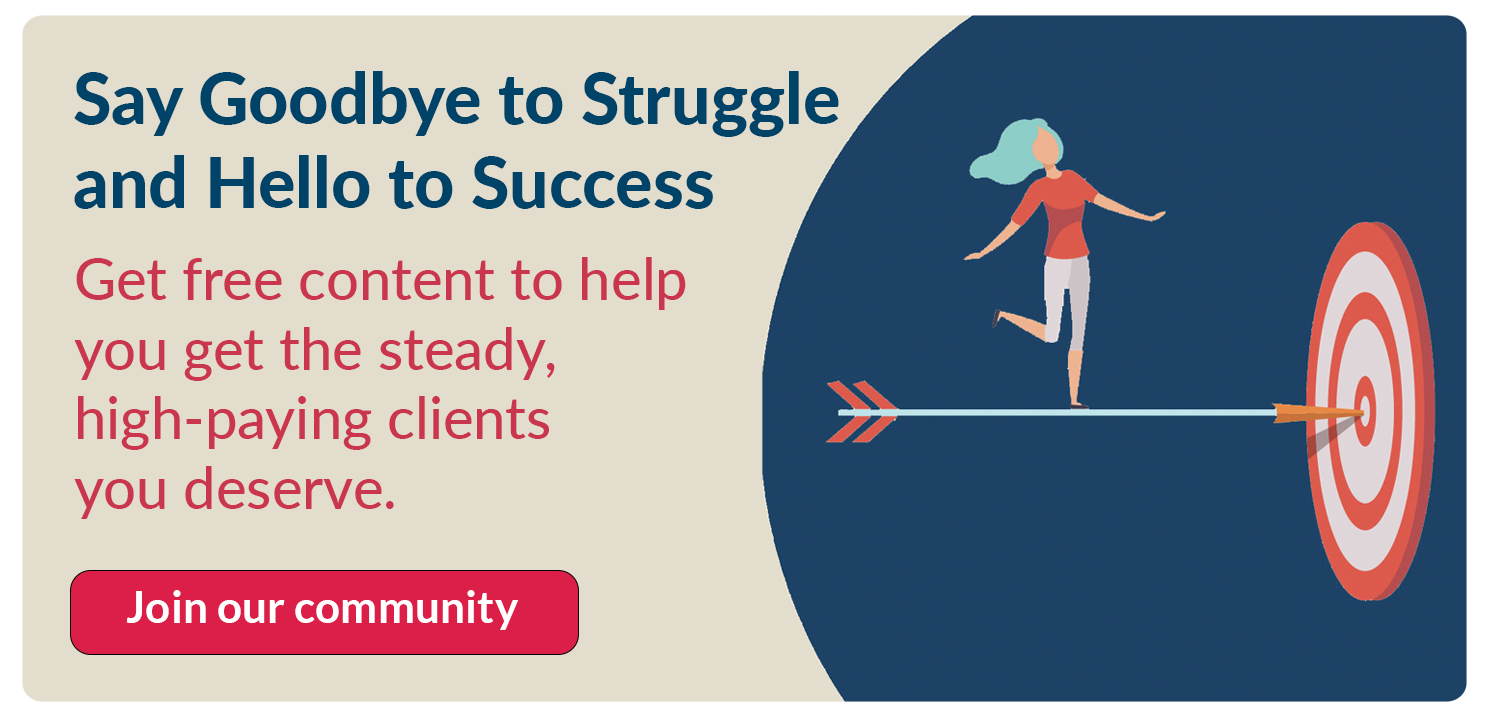Surviving a Freelance Disaster: Here’s What Happened to Me
 Losing my biggest client was a real disaster for me. This client paid me well and gave me as much work as I wanted. The people I worked with treated me right and considered me part of their team. And I had been working with this ideal client for 18 years. Then a new boss took over—and decided to stop the work.
Losing my biggest client was a real disaster for me. This client paid me well and gave me as much work as I wanted. The people I worked with treated me right and considered me part of their team. And I had been working with this ideal client for 18 years. Then a new boss took over—and decided to stop the work.
I’ll be honest; I did feel sorry for myself. At first.
Bad Things Happen to Good Freelancers
But a pity party wasn’t going to do me any good.
My disaster was just one of those bad things that happen to all freelancers. I knew that I had to tap into my resilience and find new clients.
From Disaster to Opportunity
So I stopped thinking of this as a disaster, and decided to turn it into an opportunity. While the client I lost was ideal in many ways, I hadn’t been doing the type of freelance work I like best for them. So this was a chance for me to focus more on my favorite work.
I did what I always did when I lost or fired big clients. Yes, this has happened to me before—because losing clients is a part of freelancing. I started an active marketing campaign. This one had two parts:
- Direct email to hospitals and disease associations (my preferred clients)
- Outreach to colleagues.
Both of these strategies had gotten me steady, high-paying clients in the past. So I updated and expanded my prospect lists—the clients I most wanted to work with—and got ready to do another direct email campaign.
A Strong Network Pays Off
I also tapped into my network, which I had been building for years. By focusing on being helpful to others, and volunteering for my professional associations, colleagues got to know and trust me. I regularly shared resources that would help other people, mentored new freelancers, referred work to other freelancers, and more. Over the years, I’ve gotten many referrals without ever mentioning that I was looking for work.
After I lost my biggest client, I networked more strategically and kept my ears open for opportunities. For example, when a colleague mentioned that she had a new client who wanted to give her more work than she could handle, I asked her for a referral. Now, we’re both working for the client.
It’s okay to ask for referrals and leads to freelance opportunities, as long as you do it the right way.
Staying in touch with colleagues, clients, past clients, and interested prospects regularly also paid off. My e-newsletter is an easy way for me to provide useful information and help ensure that these key contacts think of me when they have a freelance opportunity to refer or need a freelancer. I also send holiday cards and stay in touch with key contacts with personal emails now and then.
My biggest new client in 2016 came from staying in touch, which I call targeted follow-up. Four years after I began staying in touch with a former client who had moved to a different organization, she hired me. The job was so big that I had to bring in 3 other freelancers to work with me.
The Year that Started as a Disaster Ends Well
Within a few months of my freelance disaster, I had 4 new steady, high-paying clients. Once again, I had as much work as I wanted. Here’s how I got them:
- Referrals: 3 new clients
- Targeted follow-up: 1 new client.
I never did the direct email campaign—because I found clients before I could start this. The work wasn’t wasted though. Just doing something to help myself gave me a sense of control over losing my biggest client. And if and when I need to find more clients again, I can update and use my prospect lists.

Learn More About Surviving a Freelance Disaster
Why You Need to Use Direct Email: What 4 Freelancers Say
What Happens to Your Freelance Work When You Ask for Help
3 Surefire Ways Volunteering Helps You Get Freelance Work
What Happens When Freelancers Play Nice (Are Givers, Not Takers)
11 Steps to a Remarkable E-Newsletter that will Impress Clients